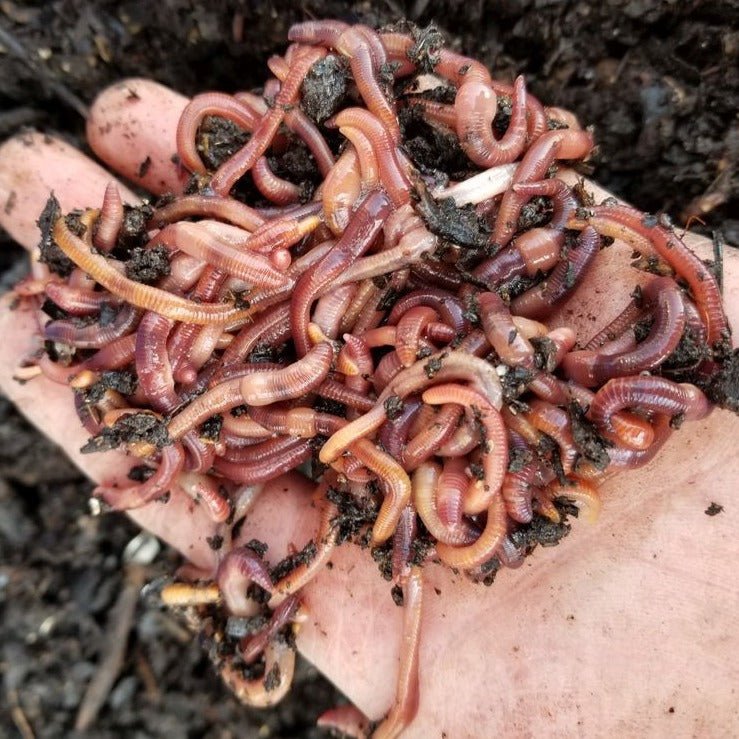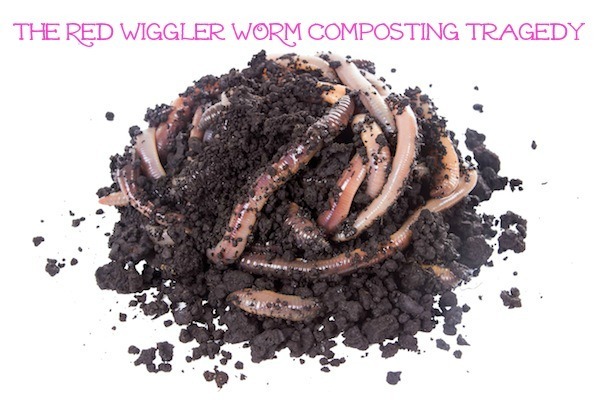Unlock the Benefits of Red Wiggler Composting for Your Organic Garden
Unlock the Benefits of Red Wiggler Composting for Your Organic Garden
Blog Article
Discovering the Systems of Red Wiggler Composting: A Comprehensive Guide to the Refine and Its Positive Effect On Lasting Horticulture Practices
The detailed devices of red wiggler composting, utilizing the one-of-a-kind physiology of Eisenia fetida, provide a compelling avenue for boosting lasting horticulture techniques. This procedure not only transforms natural waste right into nutrient-dense vermicompost however also promotes a much healthier soil environment through improved aeration and microbial activity. As metropolitan horticulture gains traction, comprehending the subtleties of this composting technique ends up being increasingly pertinent. However, the trip into its myriad advantages and best methods is just beginning, triggering a better examination of how this method can improve our gardening strategies.
Recognizing Red Wigglers
Red wigglers, clinically known as Eisenia fetida, are a varieties of earthworm highly regarded for their efficiency in composting natural waste. These worms prosper in nutrient-rich environments, specifically in decaying organic issue, making them suitable for vermicomposting systems - Red Wiggler Composting. Identified by their reddish-brown coloration and segmented bodies, red wigglers are smaller sized than usual earthworms, normally determining between three to 4 inches in length
Their unique physiological qualities improve their composting capacities; as an example, they have a high reproductive price, enabling populations to increase swiftly under ideal conditions. Red wigglers consume natural material, damaging it down via their digestive systems, which causes nutrient-rich spreadings that serve as an outstanding natural fertilizer. Their starved cravings allows them to process large quantities of food waste efficiently, considerably reducing land fill payments.
In enhancement to their composting prowess, red wigglers play a vital function in dirt wellness. Red Wiggler Composting. They aerate the soil and assist in the decay of natural matter, more enhancing the dirt ecosystem. Understanding the features and ecological benefits of red wigglers is important for anybody aiming to carry out lasting gardening methods through effective composting methods
The Composting Process
The composting procedure includes breaking down organic products right into nutrient-rich compost, a task that red wigglers succeed at as a result of their specialized digestive system systems. These worms eat food scraps, yard waste, and other natural issue, changing them right into valuable compost via a series of chemical and organic procedures.
Initially, the raw material is blended with bedding products such as shredded paper or dried out fallen leaves, producing an optimal setting for the worms. As the red wigglers ingest this mix, they break it down through their intestine, where bacteria further disintegrate the material. This process generates warmth, advertising microbial task, which accelerates decomposition.

Advantages of Red Wiggler Composting
Several garden enthusiasts and eco-conscious individuals acknowledge the countless benefits of red wiggler composting, making it a prominent selection for efficient waste administration. One of the key benefits is its capability to considerably minimize natural waste in garbage dumps - Red Wiggler Composting. Red wigglers successfully damage down cooking area scraps and other biodegradable materials, transforming them into nutrient-rich vermicompost that enhances soil health
Additionally, red wiggler composting boosts soil framework and fertility. The resulting vermicompost is bursting with helpful microorganisms, which advertise plant growth and improve nutrient retention. This natural plant food not just sustains sustainable gardening practices but additionally decreases reliance on chemical fertilizers, promoting a much healthier environment.
Additionally, red wiggler composting is a space-efficient technique, making it optimal for city gardeners with additional hints minimal room. The process can be conducted inside or outdoors, enabling year-round composting regardless of climate conditions. In addition, red wigglers are low-maintenance organisms that require very little care, making them easily accessible for beginner garden enthusiasts.
Essentially, the advantages of red wiggler composting extend past waste decrease; they add to healthier dirts, sustainable gardening practices, and ecological stewardship, placing it as an important practice in modern-day cultivation.
Ideal Practices for Composting
For successful red wiggler composting, adhering to finest practices is necessary to optimize efficiency and ensure a productive setting for these worms. Initially, it is crucial to maintain a proper carbon-to-nitrogen proportion, ideally around 30:1. This balance promotes optimum decay and boosts the worms' health and wellness. Integrate a mix of green materials, such as vegetable scraps, and brownish products like shredded paper or cardboard.
Following, display wetness levels, aiming for a damp, sponge-like uniformity. Overly wet conditions can result in anaerobic decomposition, while extreme dry skin may impede Recommended Site worm activity. In addition, make sure appropriate oygenation by transforming the garden compost on a regular basis, which helps prevent compaction and enables appropriate oxygen flow.
Temperature level is one more vital aspect. Keep a variety of 55 ° F to 77 ° F(13 ° C to 25 ° C) to promote worm task and microbial growth. Ultimately, avoid presenting meat, dairy products, and oily foods, as these can bring in parasites and develop smells.
Enhancing Lasting Gardening
Sustainable gardening symbolizes an all natural approach that harmonizes eco-friendly principles with functional horticulture methods. By incorporating techniques such as red wiggler composting, gardeners can dramatically enhance their methods, cultivating a much more durable ecological community. Red wigglers, renowned for their effective decomposition capabilities, convert organic waste right into nutrient-rich garden compost, therefore improving the soil without counting on chemical fertilizers.
Carrying out lasting horticulture methods, such as plant turning, buddy planting, and mulching, additional complements the benefits of composting. These techniques not only boost soil framework and fertility however likewise promote biodiversity, attracting helpful pests and microorganisms that contribute to grow wellness. Using native plants can lower water usage and reduce upkeep, lining up with water preservation initiatives.

Verdict
In final thought, red wiggler composting represents an important method for improving sustainable gardening methods. The efficient food digestion of natural waste by Eisenia fetida not only produces nutrient-rich vermicompost yet additionally fosters enhanced soil wellness and structure. By promoting aerobic decay, this strategy reduces smells and waste while minimizing dependency on chemical fertilizers. Inevitably, the fostering of red wiggler composting can dramatically contribute to eco-friendly horticulture, profiting both metropolitan and amateur garden enthusiasts in their growing initiatives.
The complex systems of red wiggler composting, making use of the distinct physiology of Eisenia fetida, offer a compelling method for boosting lasting horticulture practices. Recognizing the features and ecological benefits of red wigglers is important for anybody looking to apply sustainable horticulture methods with efficient composting techniques.

In conclusion, red wiggler composting stands for a vital method for improving sustainable gardening methods. Inevitably, the fostering of red wiggler composting can significantly add to environment-friendly gardening, benefitting both urban and beginner garden enthusiasts in their growing initiatives.
Report this page